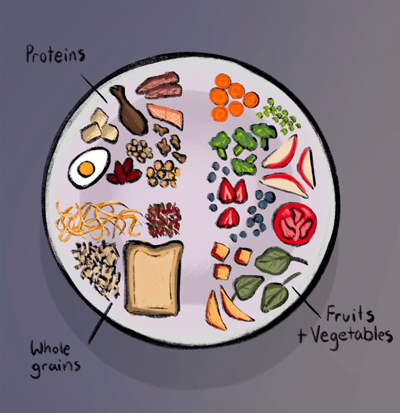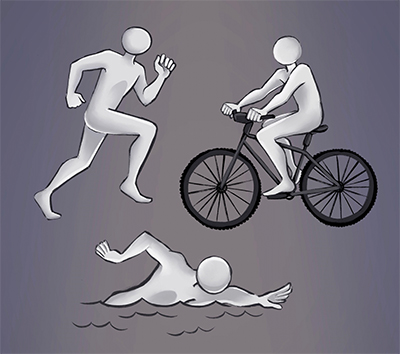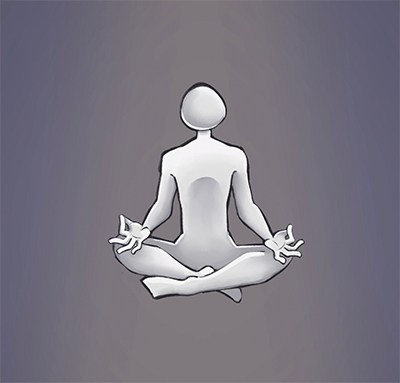It’s February and that means that it is Heart Month and here at Halton Chiropractic Clinic we want to bring attention to the importance of cardiovascular health! Heart disease affects more than 2.4 million Canadians over the age of 20, which is why making choices like eating well and being physically active to reduce your risk is so important.
Up to 80% of premature heart disease and stroke can be prevented by healthy eating and being physically active. There are many ways to reduce your risk – let’s start by talking about healthy eating.
Healthy Eating
A healthy diet can reduce your risk by improving your cholesterol levels, reducing your blood pressure, managing your body weight, and controlling blood sugar. Canada’s Food Guide gives us a great idea of what a balanced and healthy diet looks like.

Increasing your intake of fruits and vegetables is one of the most important changes you can make! They are full of nutrients, vitamins, minerals, and fibre. These keep you full for longer and help you maintain a healthy weight. Canada’s Food Guide says that these should take up at least half of your plate each meal.
Whole grains also keep you full longer and help maintain a healthy weight by being full of fibre, protein, and B vitamins. Make sure that these fill a quarter of your plate instead of processed and refined grains.
The last quarter of your plate is filled by protein and there are way more options than just chicken, pork or beef! Protein filled foods include legumes, nuts, seeds, tofu, soy, fish, shellfish, eggs, milk, yogurt, etc. Protein helps maintain our bones, muscles, and skin.
There are many more habits that you can do each day to help your cardiovascular health, such as choosing water over sugary drinks, eating smaller, more frequent meals, and making a meal plan each week to avoid going for unhealthy, potentially more “convenient” food.
Physical Activity
The benefits of being physically active are endless! It can reduce your risk of heart disease and stroke, it helps prevent and control risk factors like high blood pressure, high cholesterol, type 2 diabetes, osteoporosis, cancer, and obesity. It can also reduce stress levels, increase your energy, improve your sleep as well as improve your digestion to name a few! Not to mention that increasing your physical activity levels can help improve your posture and balance and make stronger muscles and bones.

How much physical activity do you need? Canada’s Physical Activity Guideline suggests that we all get 150 minutes of moderate- to – vigorous physical activity per week.
Carving out larger chunks of time in your day to be physically active can be difficult but we can break down the 150 minutes in shorter bursts of just 10 to 15 minutes a day. For example, take a 10-minute walk during your lunch hour or take 20 minutes to walk around the block after dinner.
Some examples of light effort activity include walking, easy gardening, and stretching. Moderate effort can include brisk walking, biking, raking, and swimming. Vigorous effort includes aerobics, basketball, faster swimming, hockey, and jogging.
It can be difficult in the middle of winter to think of many activities that you can do inside and outdoors, here some examples, bowling, dancing, ice skating, mall walking, hockey, snowshoeing, stretching and yoga. With Ontario opening back up, so do the possibilities!
It’s much easier to stay on track when you enjoy doing the physical activity so take your time to try out different activities and find something that’s going to work for you!
Stress Reduction
Lastly, let’s talk about reducing your stress. Stress is the body’s response to a real or perceived threat, this response can include a racing heart, tense muscles and sweating.
There is a strong link between heart disease, stroke, and stress. Stress causes your heart to work harder, it increases your blood pressure, and it increases the sugar and fat levels in your blood. These can all become risk factors for clots, which lead to heart attacks and strokes.

Therefore, it is important to recognize and understand your stress. Examples of major stressors include, losing a loved one, changing your job, moving, traffic jams, work pressures, etc.
Once you’ve identified what your stressors are it’s important to create a goal to reduce your stress. Our goals can include physical and behavioral coping skills like physical activity, yoga, breathing, resting and a healthy diet. It can also be thinking or mental coping skills like problem solving and meditation. Personal and social coping skills are also one way to deal with stress and this can include spending time with family and friends, developing new hobbies and personal interests, and enjoying the outdoors.
Your cardiovascular health can be impacted by so many decisions that you make every day. This can be overwhelming, but a great place to start is by making small changes every day that lead you on a better, healthier path.
Happy Heart Month from everyone here at Halton Chiropractic Clinic, we’re looking forward to seeing you this month!






